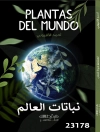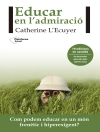This concise and practical guide thoroughly presents the characteristics of children with specific mild exceptionalities in today′s diverse classroom. Using an active, problem-solving approach that reflects how today′s students learn, Dr. Sydney S. Zentall identifies the characteristics of children with mild exceptionalities that can be gleaned from observations, written descriptions, and personal interactions. Unlike many texts on this topic, which overwhelm students with extraneous information, The text focuses on the characteristics of these students within general education and special class settings. With this knowledge readers will better understand the implications of characteristics for accommodations and be ready to apply this knowledge with empirically based interventions.
Jadual kandungan
Preface
Acknowledgements
Dedication
Section I. Introduction to Mild Exceptionalities
1. Formal and Legal Definitions of Exceptionalities
2. Informal Analysis of the Characteristic Behavior of Individuals
Section II. Verbal and Nonverbal Learning Disabilities (LD)
3. Verbal LD Spoken Language
4. Verbal LD Written Language
5. Math Disabilities and Nonverbal LD
Section III. Cognitive Exceptionalities
6. Intellectual Disabilities
7. Dual Exceptionalities with Giftedness
8. Traumatic Brain Injuries
Section IV. Attentional Disorders
9. ADHD Inattentive and Combined Subtypes
10. ADHD Hyperactive/Impulsive Subtype
Section V. Social Disorders
11. Externalizing Behavioral Disorders
12. Internalizing Emotional Disorders
13. Autism Spectrum Disorders
14. Abuse and Addictions
Section VI. Motor Disorders
15. Developmental Coordination Disorder, Dyspraxia, Dysgraphia, and Tourette Syndrome
Appendix I: CEC Standards
Appendix II: Case Study
Glossary
Index
About the Author












